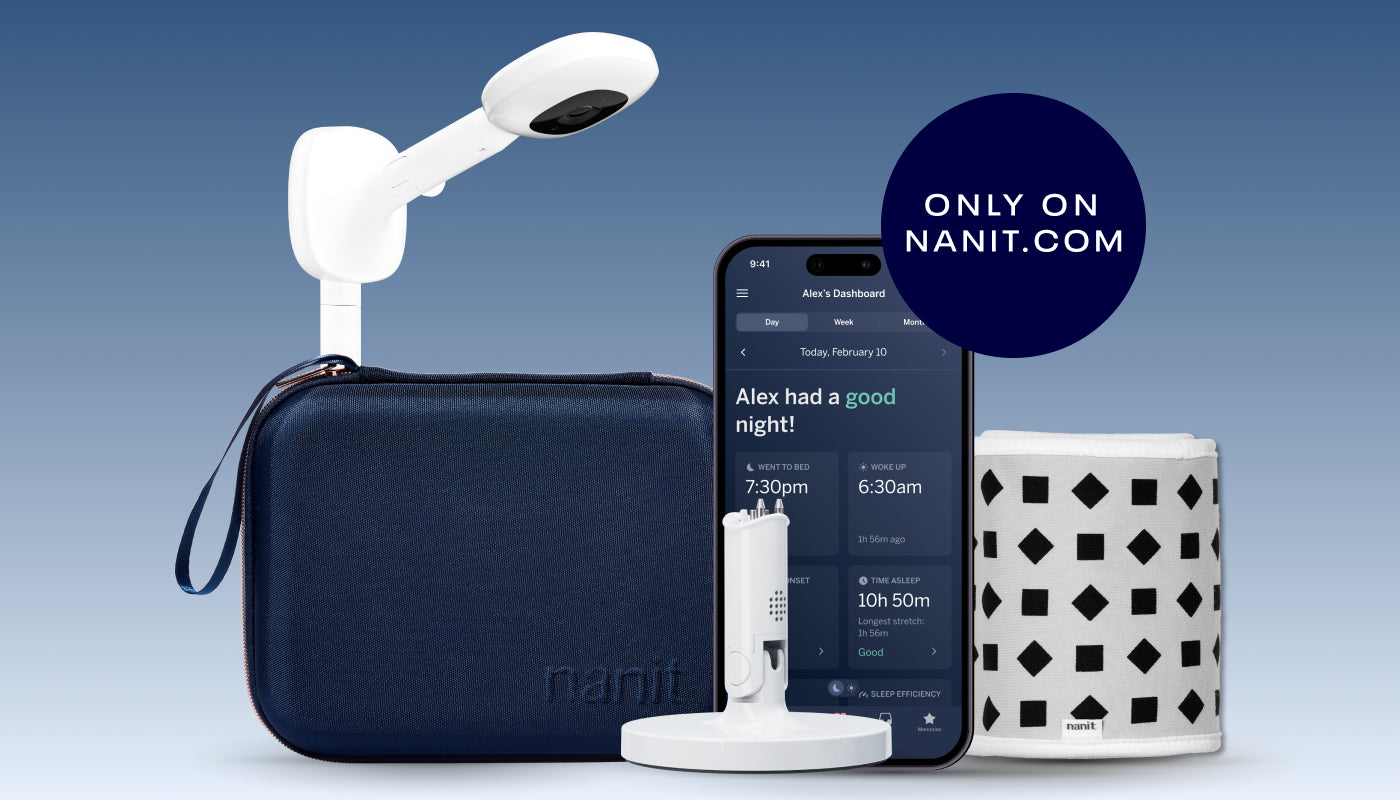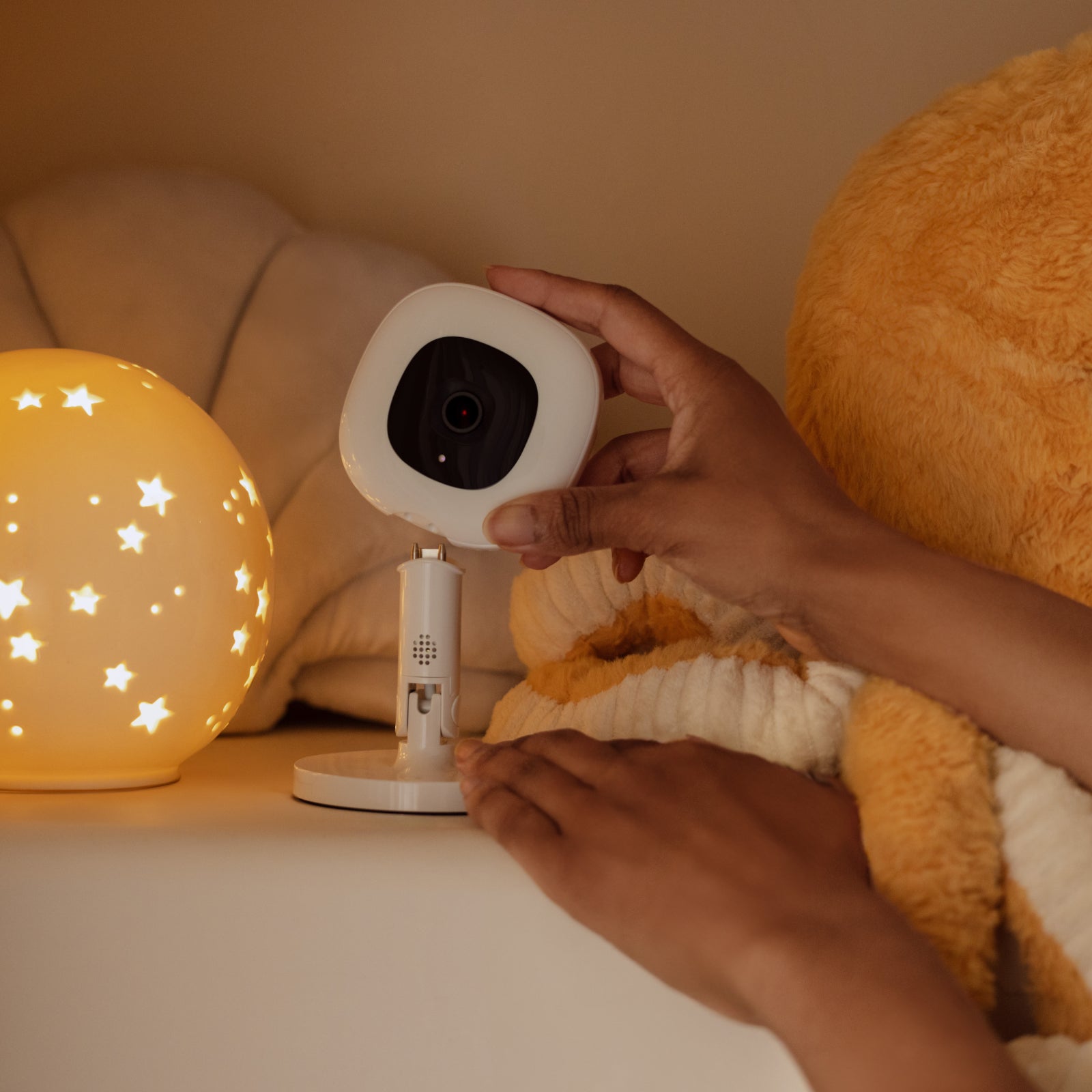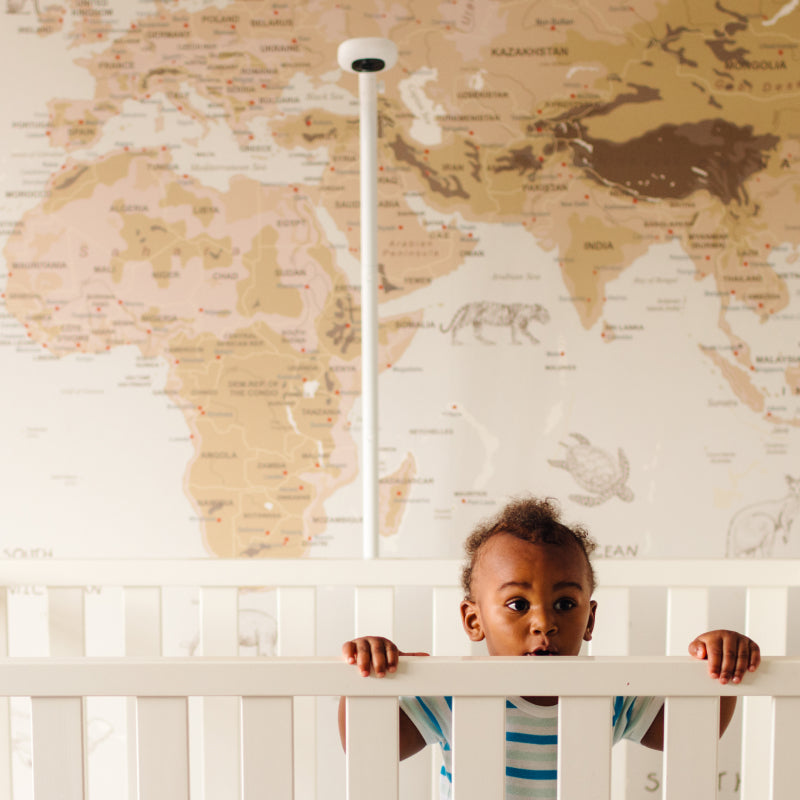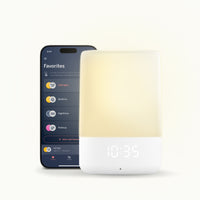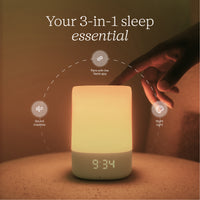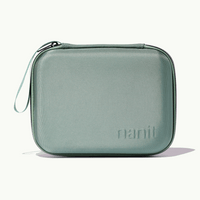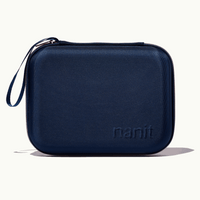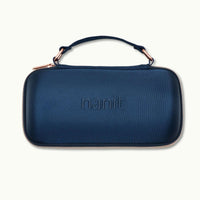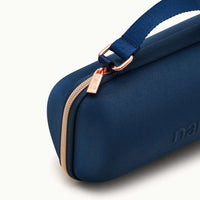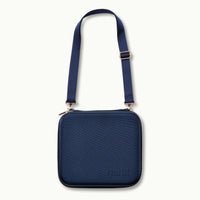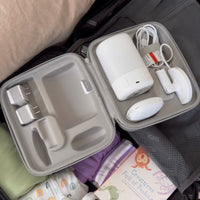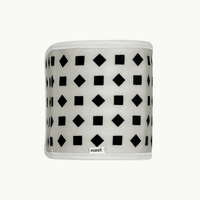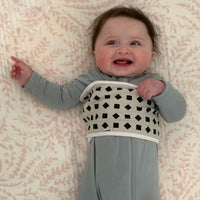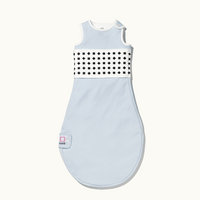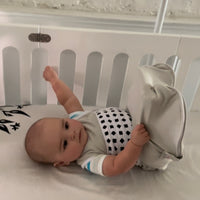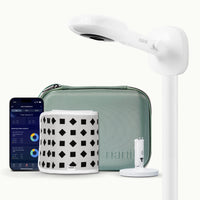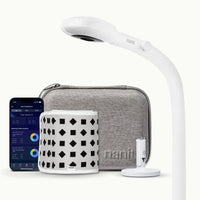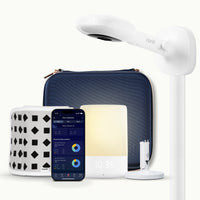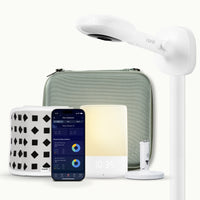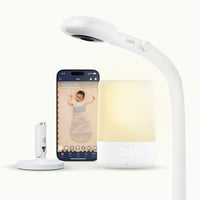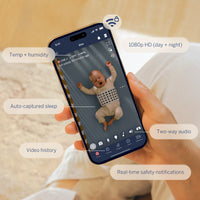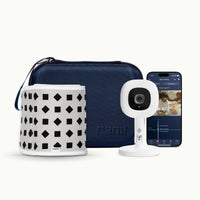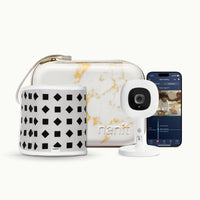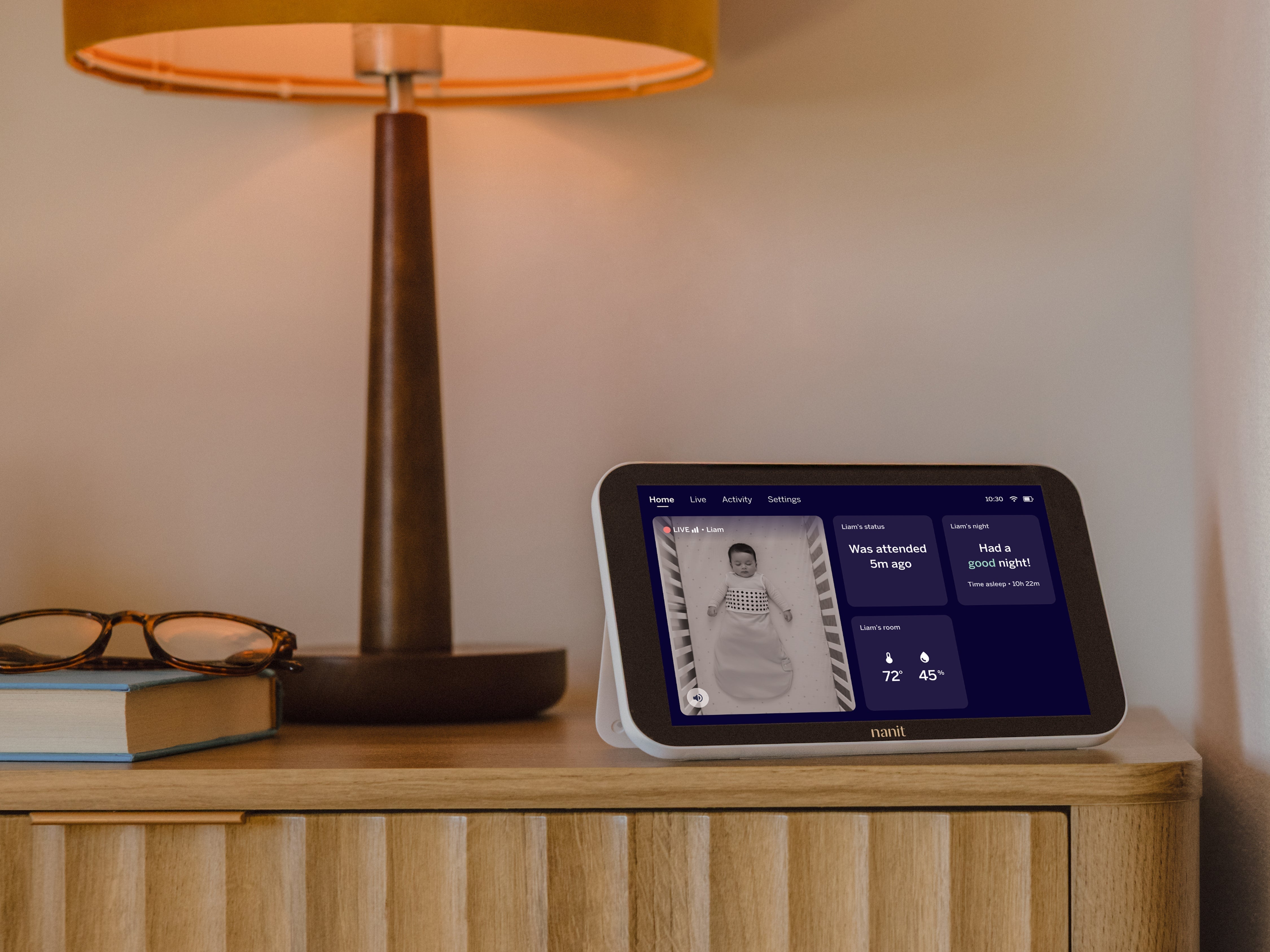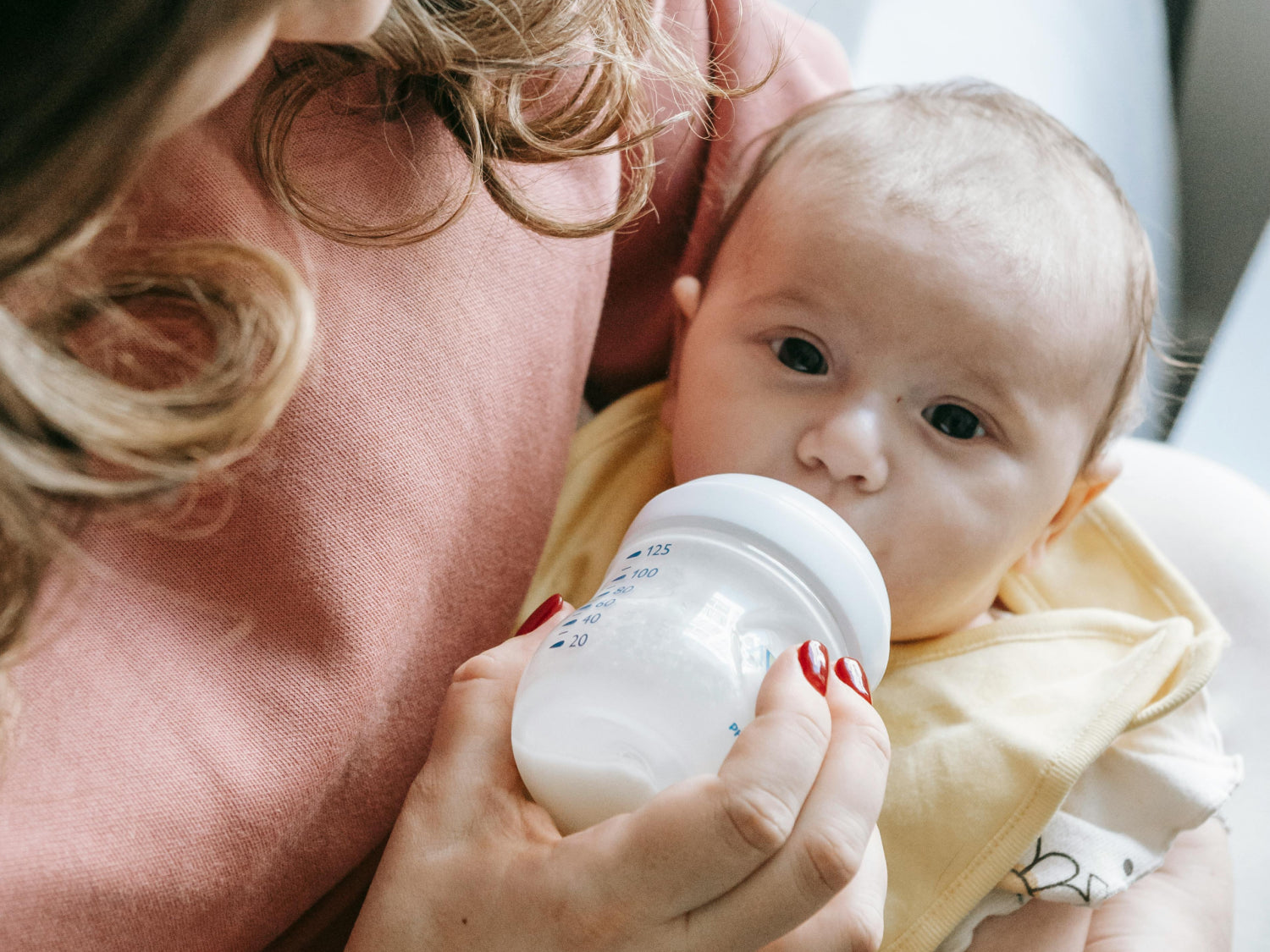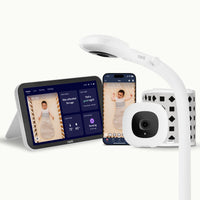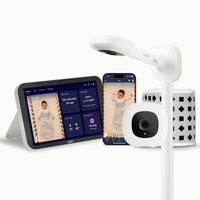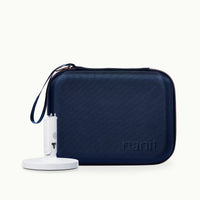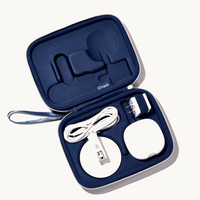Whether you're expecting your first baby or adding to your growing family, one of the best investments you can make for comfortable breastfeeding is a well-fitting, supportive nursing bra. The right nursing bra can make the difference between a comfortable, confident feeding experience and one marked by discomfort, frustration, and even physical complications.
Here's the thing: your body goes through some pretty remarkable changes during pregnancy and breastfeeding. Your regular bras? They're just not going to cut it. A quality nursing bra isn't just convenient—it's about supporting your physical comfort, milk production, and overall breastfeeding success.
And when you're creating comfortable routines around feeding and rest, everything feels a little more manageable. Check out our comprehensive guide to newborn sleep tips for more ways to support yourself and your baby during those exhausting early days.
What’s a Nursing Bra and Why Do You Need One?
Nursing bras are specially designed to provide support while allowing easy access for feeding or pumping. Unlike regular bras, they feature drop-down cups, clip-down panels, or other mechanisms that let you expose one breast at a time for feeding while keeping the other side supported and covered.
But they're about way more than just convenience. During pregnancy and breastfeeding, your breasts can increase significantly in size and weight—sometimes growing several cup sizes. That kind of change needs specialized support to prevent discomfort, back pain, and potential complications like clogged ducts or mastitis.
Why Support Matters
A well-designed nursing bra provides crucial support during a time when your breast tissue is more sensitive and heavier than usual. Proper support helps maintain healthy circulation, reduces strain on your back and shoulders, and can even support better milk flow by avoiding compression that might block milk ducts.
Quality nursing bras also use softer, more breathable materials than many regular bras, which is important when your skin may be more sensitive and prone to irritation. The fabrics used are often designed to wick moisture away from your skin, which helps prevent bacterial growth and keeps you comfortable throughout long feeding sessions.
What Type of Nursing Bra Should You Get?
The nursing bra market offers a couple different styles, each designed to meet specific needs during different phases of your breastfeeding journey. Understanding your options available can help you choose the right ones for your lifestyle and preferences.
Underwire vs. Wireless Nursing Bras
This is one of the biggest decisions you'll make. Underwire bras provide maximum support and shaping, which many people prefer — especially if you have a larger bust size. However, improperly fitted underwire bras can compress milk ducts and potentially lead to clogged ducts or mastitis.
Wireless nursing bras (also called soft-cup bras) offer comfortable support without the compression risk. They're typically made with stretchy, supportive bands and can include built-in shaping or light padding. These adapt better to the size fluctuations common during breastfeeding and are often more comfortable for wearing all day.
Sleep Nursing Bras
Sleep nursing bras are designed for nighttime comfort and convenience during those frequent night feedings. They're typically made from ultra-soft, stretchy materials that provide light support without hardware that might dig in while lying down. Many have easy-access designs that let you nurse without fully removing the bra.
Sports Nursing Bras
For active mothers who want to maintain their exercise routine while breastfeeding, sports nursing bras provide the support needed for physical activity while still allowing access for post-workout feeding or pumping. These offer more compression and support than regular nursing bras but include the same convenient access features.
Pumping and Hands-Free Bras
Specialized pumping bras or hands-free pumping accessories let you pump without holding the flanges in place. This convenience is invaluable if you pump regularly, whether exclusively pumping or combining pumping with direct nursing.
|
Bra Type |
Best For |
Support Level |
Comfort Level |
|
Underwire |
Maximum support, shaping |
High |
Moderate |
|
Wireless |
All-day comfort, size fluctuation |
Moderate to High |
High |
|
Sleep Bras |
Nighttime feeding, comfort |
Light to Moderate |
Very High |
|
Sports |
Exercise, active lifestyle |
Very High |
Moderate |
|
Pumping |
Hands-free pumping |
Moderate |
Moderate |
Choosing the Right Size and Fit
Getting the right size nursing bra is crucial for comfort, support, and breastfeeding success, but it can be tricky because your body continues changing throughout pregnancy and breastfeeding. Your breast size may fluctuate based on milk supply, time since last feeding, and your baby's feeding patterns.
When to Get Professionally Measured
While many people are used to estimating their bra size or using online calculators, pregnancy and breastfeeding are times when professional fitting becomes especially valuable. A trained fitter can account for the unique changes your body is experiencing and help you understand how different brands and styles might fit.
Consider getting measured during your third trimester, around 36-38 weeks, to get nursing bras for immediate postpartum use. Plan for another fitting around 6-8 weeks postpartum when your milk supply has regulated and your body has begun settling into breastfeeding patterns.
Signs of Poor Fit
A poorly fitting nursing bra can cause more than just discomfort — it can interfere with milk production and increase your risk of breastfeeding complications. Watch for signs like red marks or indentations from the band or cups, spillage over the tops or sides of cups, gaps between your breast and the cup, or any areas where the bra feels tight or restrictive.
🌙 Comfort Check: Signs of a Good Fit
-
Band sits parallel to the ground and doesn't ride up
-
Cups fully contain breast tissue without spillage or gaps
-
Straps stay in place without digging into shoulders
-
No red marks or pressure points after wearing
-
Easy access for feeding without struggle or discomfort
-
Comfortable for extended wear throughout the day
What Makes a Quality Nursing Bra?
Not all nursing bras are created equal — here’s what to focus on when you’re shopping.
Easy-Access Mechanisms
The nursing access mechanism is everything. Look for clips or panels that you can easily operate with one hand while holding your baby. It should open and close smoothly without requiring excessive force or complex moves that might disturb your baby during feeding.
Quality Materials and Construction
Choose nursing bras made from breathable, moisture-wicking fabrics that can withstand frequent washing. Cotton blends, bamboo, and specialized performance fabrics offer comfort and durability. Avoid materials that don't breathe well — trapped moisture can contribute to skin irritation or bacterial growth.
Adjustable Features
Because your body will keep changing throughout breastfeeding, look for bras with multiple hook positions, adjustable straps, and stretchable materials that can accommodate size fluctuations. Some nursing bras feature removable padding that allows you to customize the fit and coverage based on your needs.
💡 Quality Features Checklist
✓ One-handed nursing clips
✓ Wide, comfortable straps
✓ Breathable, moisture-wicking fabric
✓ Multiple hook positions
✓ Smooth, flat seams
✓ Adequate cup coverage
✓ Supportive under-band
✓ Easy-care washing instructions
When Should You Buy a Nursing Bra?
Timing your nursing bra purchases requires balancing preparation with the reality that your body is still changing. Buy too early and they might not fit — wait too long and you could be unprepared for immediate postpartum needs.
Third Trimester Shopping
Most experts recommend shopping for nursing bras during your third trimester, around 36 weeks of pregnancy. At this point, your breasts are approaching their full pregnancy size, though they'll likely increase slightly more once your milk comes in after birth. Purchase 2-3 well-fitting nursing bras in this size for immediate postpartum use.
Postpartum Sizing
Plan to reassess your sizing 6-8 weeks after birth, once breastfeeding is established and your milk supply has regulated. Many women find they need different sizes or styles once they understand their breastfeeding patterns and preferences. This is when you can invest in a larger wardrobe of nursing bras for the long haul.
⏰ Nursing Bra Timeline
32-36 weeks pregnant: Get measured and purchase 2-3 nursing bras
Immediately postpartum: Use pregnancy purchases, assess comfort
2-3 weeks postpartum: Evaluate if additional sizes are needed
6-8 weeks postpartum: Get re-measured and purchase full wardrobe
Throughout breastfeeding: Reassess as needed for comfort and fit
Keeping Them Clean & Supportive
Proper care extends the life of your nursing bras and maintains their supportive properties. Follow these guidelines to keep your nursing bras in their best condition throughout your breastfeeding journey.
Washing and Drying
Wash nursing bras in cool water using gentle detergent, and skip fabric softeners (they can break down elastic fibers and reduce support). Use a lingerie bag to protect clips and other hardware during machine washing, or hand wash when possible for the gentlest care.
Air drying is always preferable to machine-drying, which can damage elastic and cause shrinkage. If you must use a dryer, use the lowest heat setting and remove bras while slightly damp to finish air drying. Never wring or twist wet nursing bras, as this can distort their shape.
Rotation and Replacement
Having multiple nursing bras allows you to rotate them regularly, which reduces wear and gives elastic time to recover between wearings. Most people find that 4-6 nursing bras provide adequate rotation for daily wear, sleep, and washing cycles.
💡 Nanit Expert Insight
“Many breastfeeding women wear a bra overnight to prevent leaks and protect tender skin. Choosing a comfortable, supportive nursing bra can improve maternal comfort, promote better sleep, and support successful feedings.” - Maristella Lucchini, PhD., Senior Clinical Researcher at Nanit
Common Problems and Solutions
Even with careful selection and proper care, you might run into challenges with nursing bras throughout your breastfeeding journey. Understanding common issues and their solutions can help you address problems quickly and stay comfortable.
Size Fluctuations
Many breastfeeding parents experience significant size changes throughout the day or as milk supply adjusts. If your bras feel tight in the morning when you're fullest but loose later, consider bras with more stretch in the cups or adjustable features that accommodate these natural fluctuations.
Leaking and Moisture Management
Breast milk leaking is totally normal, but it can make bra care challenging and cause discomfort if not managed properly. Use nursing pads and change them frequently to prevent moisture buildup. Choose bras made from quick-drying, antimicrobial fabrics when possible.
Comfort Issues During Sleep
Many new parents struggle to find comfortable sleep positioning while wearing nursing bras, especially if they're used to sleeping without a bra. Sleep-specific nursing bras made from ultra-soft, seamless materials can provide the light support needed for nighttime comfort while still allowing easy access for feeding.
🛠️ Quick Problem Solutions
Too tight in morning: Try extender hooks or size up in band
Leaking concerns: Use high-quality nursing pads, change frequently
Sleep discomfort: Switch to seamless sleep bras at night
Clip difficulties: Practice one-handed operation, consider magnetic clips
Strap sliding: Adjust strap length, check for proper band fit
Supporting Your Journey With Different Types of Nursing Bras
Your nursing bra needs will likely change throughout your breastfeeding journey as your body adapts, your milk supply regulates, and your lifestyle needs evolve.
Those First Few Weeks
In the immediate weeks after birth, prioritize comfort and easy access over fashion or shaping. Soft, wireless bras with simple clip mechanisms work well when you're learning to breastfeed and your body is recovering from childbirth.
When You’re a Breastfeeding Pro
Once breastfeeding is well-established and you're feeling more confident, you might transition to bras that offer more shaping or support — especially if you're returning to work or want more structured options for daytime wear. This is often when parents appreciate having both comfortable everyday bras and more polished options for professional settings.
Considering Extended Breastfeeding
For those who breastfeed beyond the first year, comfort and durability become increasingly important. Look for high-quality bras that will maintain their shape and support through extended wear, and don't hesitate to replace bras that have lost their supportive properties.
Creating a Comfortable Feeding Environment
The right nursing bra is just one piece of creating a comfortable, successful breastfeeding experience. Think about how your bra choices work with your overall feeding environment and routines.
Comfortable breastfeeding supports better sleep for both you and your baby—crucial during those early months. When feeding is comfortable and efficient, babies often settle back to sleep more easily, and you can rest more effectively between feeds.
Supporting Restful Sleep After Feeding
Once feeding is complete and both you and baby are comfortable, the Nanit Pro Camera can help you monitor your baby's sleep patterns and ensure they're resting peacefully. With advanced sleep tracking capabilities, you'll have confidence that your baby is sleeping safely while you get the rest you need too.
For more info about creating the best environment for feeding and sleep, explore our guide on baby sleep basics, which provides evidence-based strategies for supporting healthy sleep patterns that complement successful breastfeeding routines.
The Takeaway
Investing in quality nursing bras is an investment in your comfort, confidence, and breastfeeding success. While the initial cost might seem significant, remember that you'll likely wear these bras daily for months or even years — making cost-per-wear pretty reasonable for quality pieces.
Prioritize your comfort and needs when selecting nursing bras. Every body and every preference is different, and what works perfectly for someone else might not be right for you. Trust your instincts about fit and comfort, and remember that it's normal to need different styles for different activities or times of day.
Most importantly, finding the right nursing bras might take some trial and adjustment. Be patient with yourself as you navigate this, and don't be scared to get help from professional fitters, lactation consultants, or other experienced parents who can offer guidance and support.
For more support with establishing successful feeding routines and creating comfortable environments for both feeding and sleep, explore our detailed guide to essential items for newborn care.

